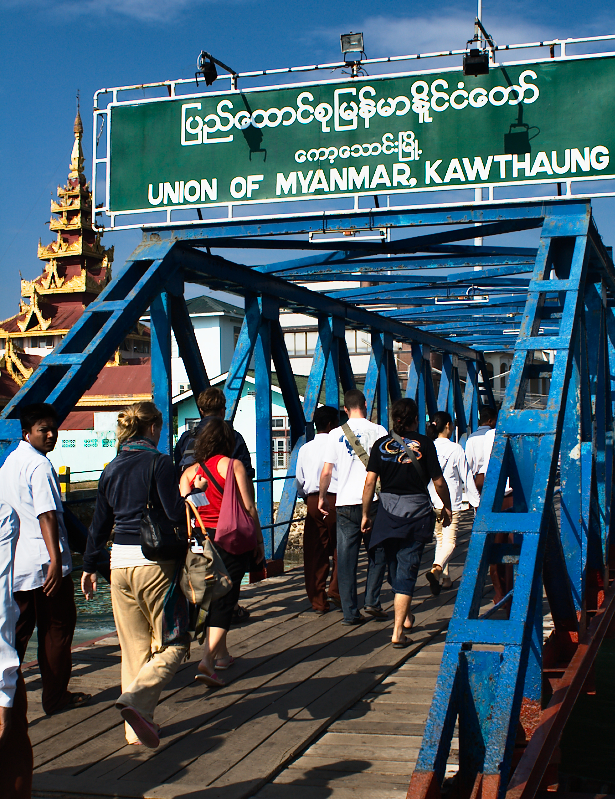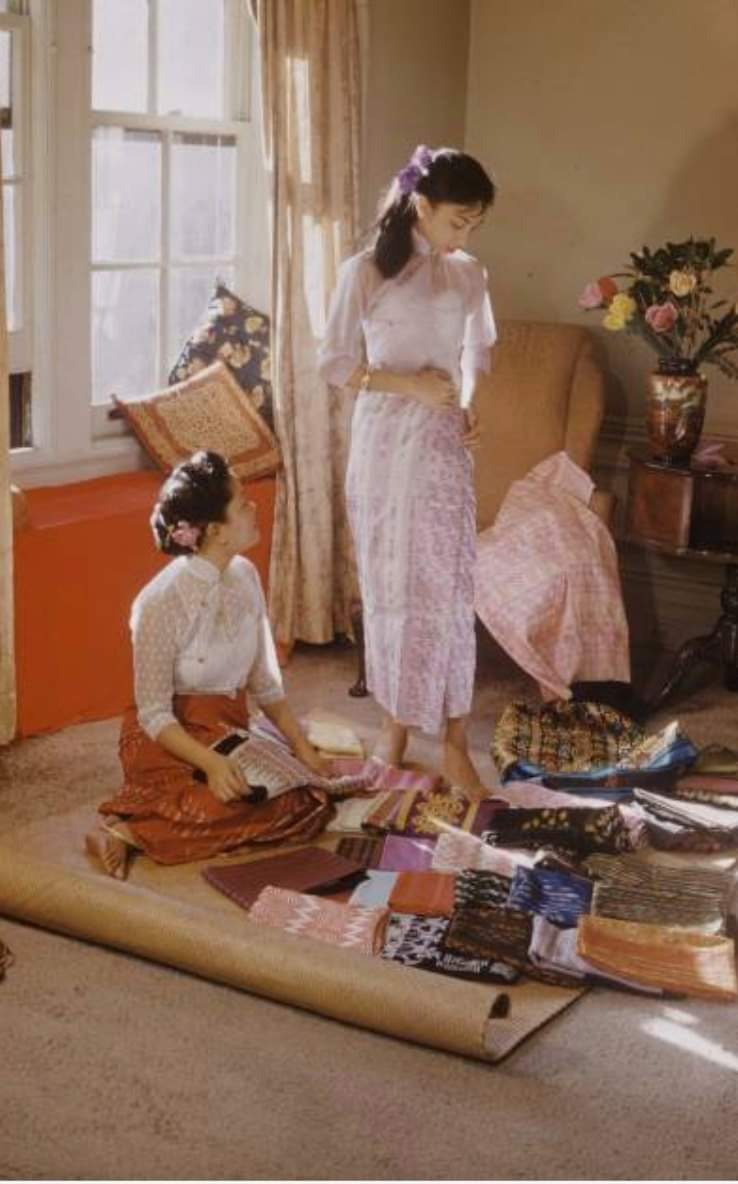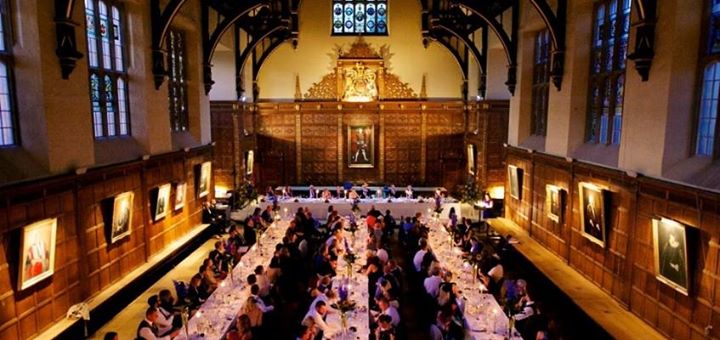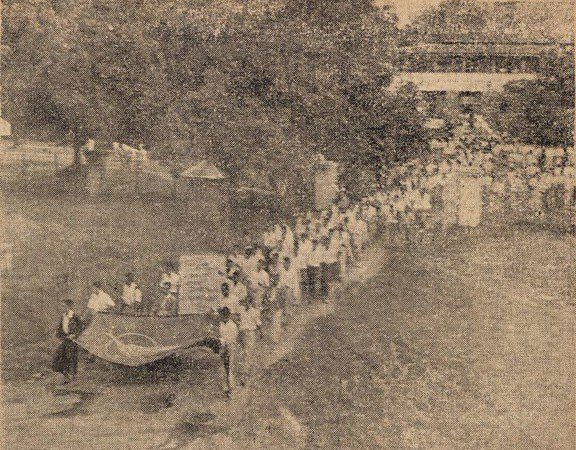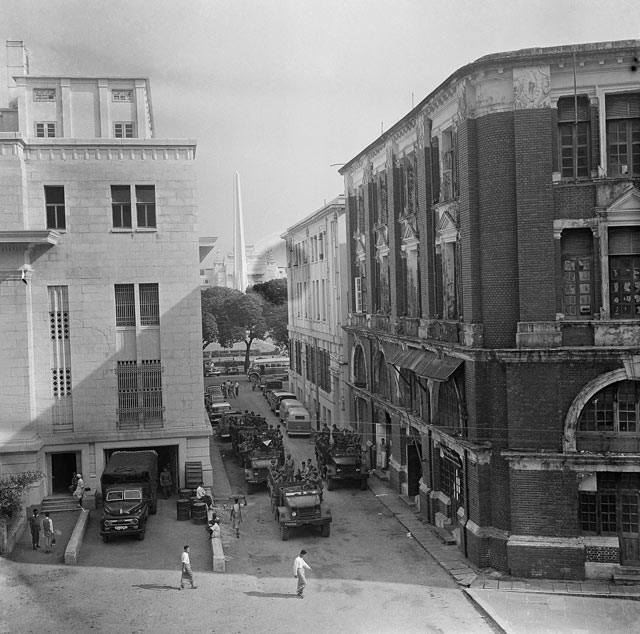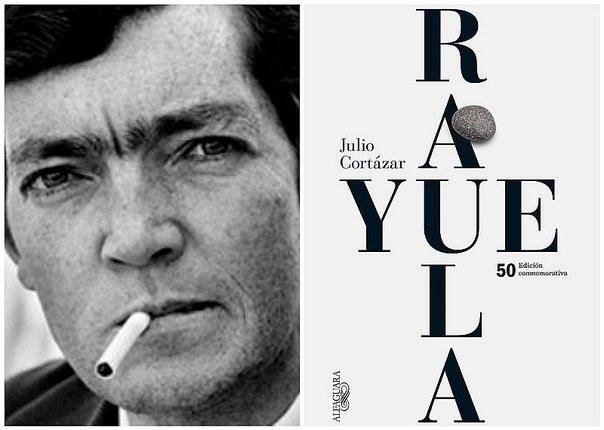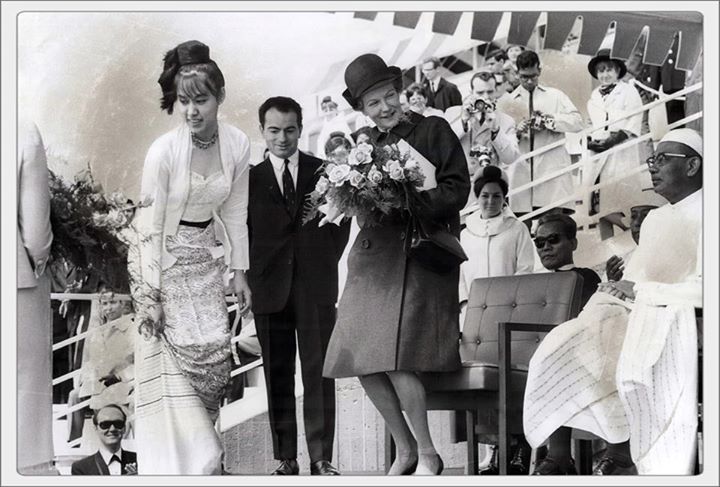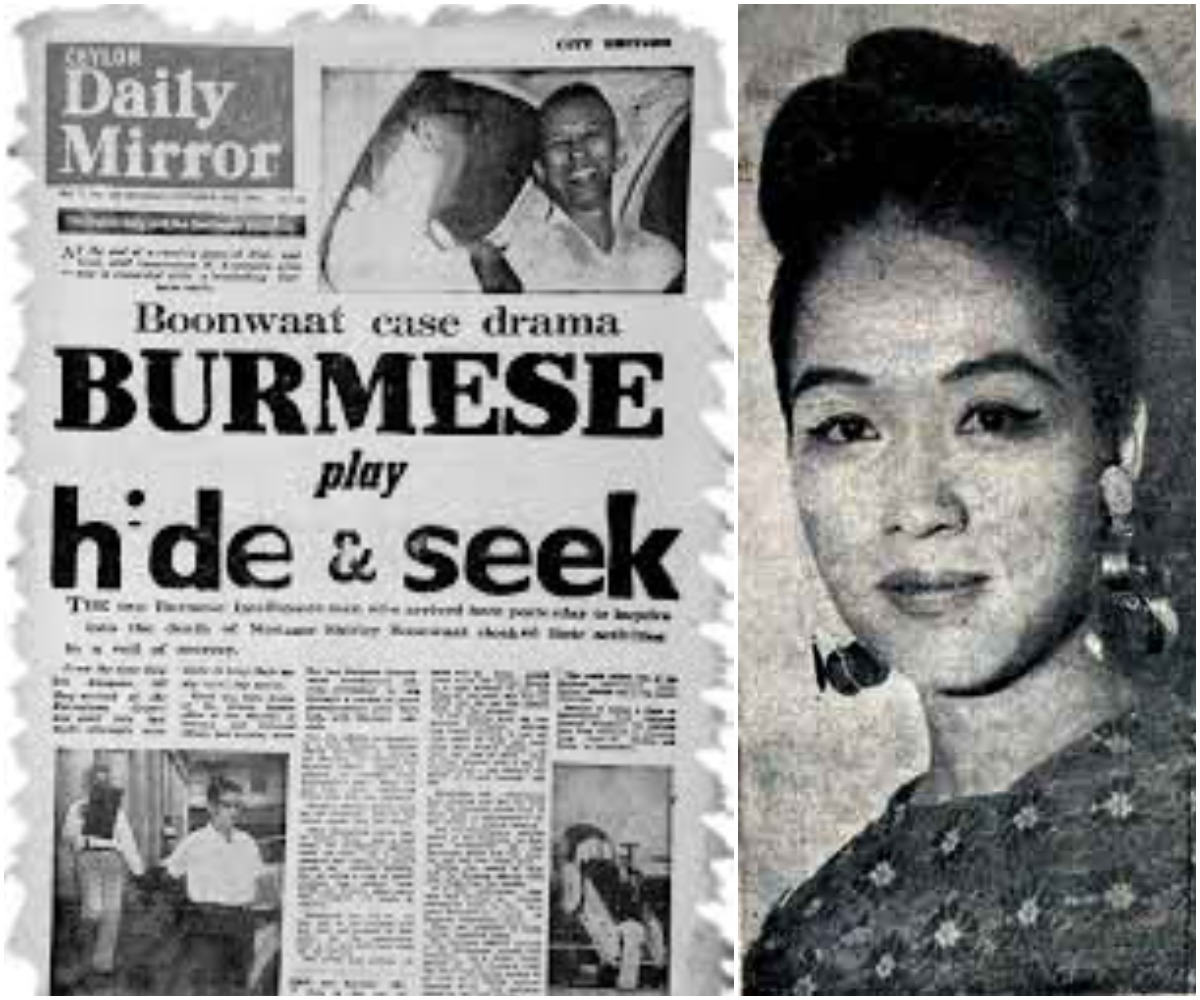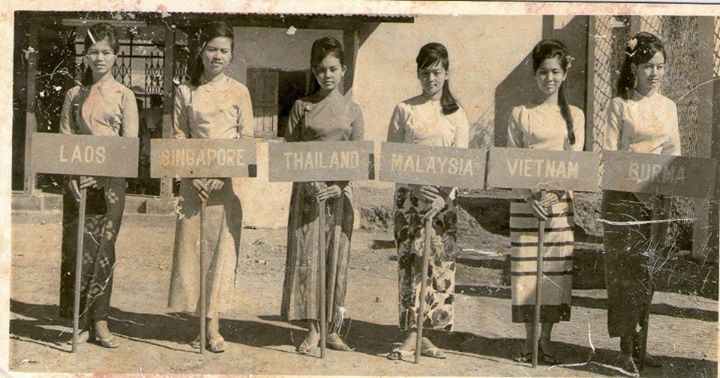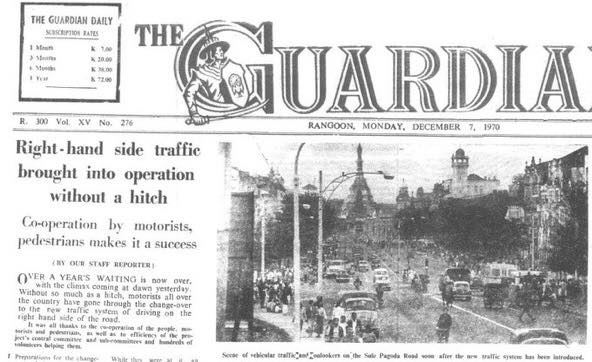Contemporary Myanmar and the World (1960s to present day)
Since “the day democracy died in Burma” on 2 March 1962, the country has weathered protests, military rule, civil wars, and natural disasters. This section examines Myanmar’s place in the modern world over the past decades, both from the perspective of Burmese abroad and also the impact of global trends on Myanmar.
Pashu People
The Pashu people are Burmese Malays, the majority of whom live in the area of Kawthaung and Bokpyin townships in Tanintharyi Region at the southernmost tip of Myanmar. The Tanintharyi Region (which borders Thailand) has always been a mixing bowl of different peoples gathering to trade and to cross the isthmus of Kra (Pak Chan river) overland from the Andaman Sea to the Gulf of Thailand. The region has passed between Burmese, Thai, and Mon rule numerous times over the...
Read More1960s Burmese Fashion
This photograph shows Daw Aye Aye Thant (daughter of then Burma's ambassador to the United Nations, U Thant) and a friend at U Thant's home in New York on 72nd Street c. 1960. It was taken by Russian-born photographer Nina Leen for the American magazine, Life.
Read MoreImportant Figures from Myanmar History Who Studied at Cambridge
No university outside of Myanmar (and probably no university in the world other than Rangoon University) has been as important to Myanmar as Cambridge University in the United Kingdom. Important figures from Myanmar history who studied at Cambridge include: President Dr Ba U, Prime Minister and later Adhipati Dr Ba Maw, Karen National Union (KNU) President Saw Ba U Gyi, Foreign Minister Sao Hkun Hkio, Justice U Chan Htoon, Justice U Myint Thein, Justice U Kyaw Myint, historian and Rangoon...
Read MoreThe 8 July 1962 New York Times’ Headline
The 8 July 1962 New York Times ran this headline: "15 DEAD IN BURMA IN STUDENTS' RIOT; 27 Wounded by Army After Curfew Protest Campus Building Is Blown Up". Photo credit: Mizzima
Read MoreThe Day Democracy Died in Burma
On 2 March 1962 beginning at 2 am units of the Burma Army seized control of the Secretariat, the Windermere Estate, the guest house at Halpin Road, and other important government sites. President Mahn Win Maung, Prime Minister U Nu, all members of the cabinet and many other senior political figures including leading Shan saophas were arrested over the course of the day. Sao Myee Myee, the 17-year-old son of the first President Sao Shwe Thaik was killed before dawn...
Read MoreBurmese Names in the Novel 'Rayuela' by Julio Cortazar
In the 1963 novel Rayuela (or "Hopscotch"), by the great Argentine writer Julio Cortazar (pictured here), the main character comes across a list of words that have no meaning, and so seem magical. This was the list of strange and fantastic words: U Nu U Tin Mya Bu Thado Thiri Thudama U E Maung Sithu U Cho Wunna Kyaw Htin U Khin Zaw Wunna Kyaw Htin U Thein Han Wunna Kyaw Htin U Myo Min Thiri Pyanchi U Thant Thado...
Read MoreBrigadier Tin Pe at the 1967 International and Universal Exposition in Montreal
The 1967 International and Universal Exposition ("Expo '67") was one of the most successful of all the many World's Fairs of the 20th century, with over 50 million people visiting and 62 nations, including Burma, participating. The Burma Pavilion highlighted the country's precious stones, mineral, forest and agricultural products, Burmese music was performed, and Burmese food and cigars were on sale. This was during the height of the Revolutionary Council's "Burmese Way to Socialism", with the economy collapsing fast and...
Read MoreColombo Murder Mystery
Sao Boonwaat was a diplomat and a younger son of late Saopha (shan hereditary ruler) of Kengtung, Sao Kawng Kiao Intaleng. In 1967 he was the Burmese ambassador to Ceylon (now Sri Lanka), living in Colombo with his wife Sao Nang Lao Heung aka Shirley Boonwaat. On 15 October 1967 Shirley Boonwaat died and was immediately cremated the same day. A few days later Sao Boonwaat left the country and never came back. For weeks Colombo was rocked with news...
Read MoreThe 1969 SEA Game Opening Ceremony in Rangoon
Myanmar has hosted the Southeast Asian Games twice: in 2013, and in 1969, when they were called the Southeast Asian Peninsula Games (SEAP). This photograph is from the 1969 Rangoon opening ceremony.
Read MoreAnnouncement for Switching Driving Lanes 1970
On 7 December 1970, Myanmar switches to right lane drive, but the cars remained the same. Photo credit: Renaud Egreteau
Read MoreCyclone Nargis
On 2 May 2008, more than 125,000 men, women, and children lost their lives as Cyclone Nargis devastated the Irrawaddy delta. It should always be remembered as one of the most tragic events in Myanmar history. The combination of government restrictions (primarily the first two weeks) and Western sanctions meant survivors received only a tiny fraction of the help they needed. Many of the poorest families that were affected have still not fully recovered. The immediate aftermath of Cyclone Nargis...
Read MoreYear of the Tiger
A hundred years ago there were tens of thousands of tigers across Asia, from the Black Sea to the Pacific and from Siberia to the Indian Ocean. Today there are only a few thousand left in ever-shrinking enclave. Myanmar is one of 13 countries where tigers still live in the wild. In the 19th century, tigers were plentiful in the country. They even lived on the outskirts of Rangoon and were spotted so often that one road was called Tiger...
Read MoreWhen the World Becomes 4 Degree Celsius Warmer
The world is now one degree Celsius warmer than pre-industrial levels. All leading scientists agree that 1.5 degrees will be the tipping point. Without urgent and drastic action by the biggest economies, the planet will reach that tipping point by 2030. And, without massive shifts in policy, the world will then be on track for a 3-5 degree increase in temperature by 2100. This map by Parag Khanna (translated here into Burmese) was first published by New Scientist back in...
Read More